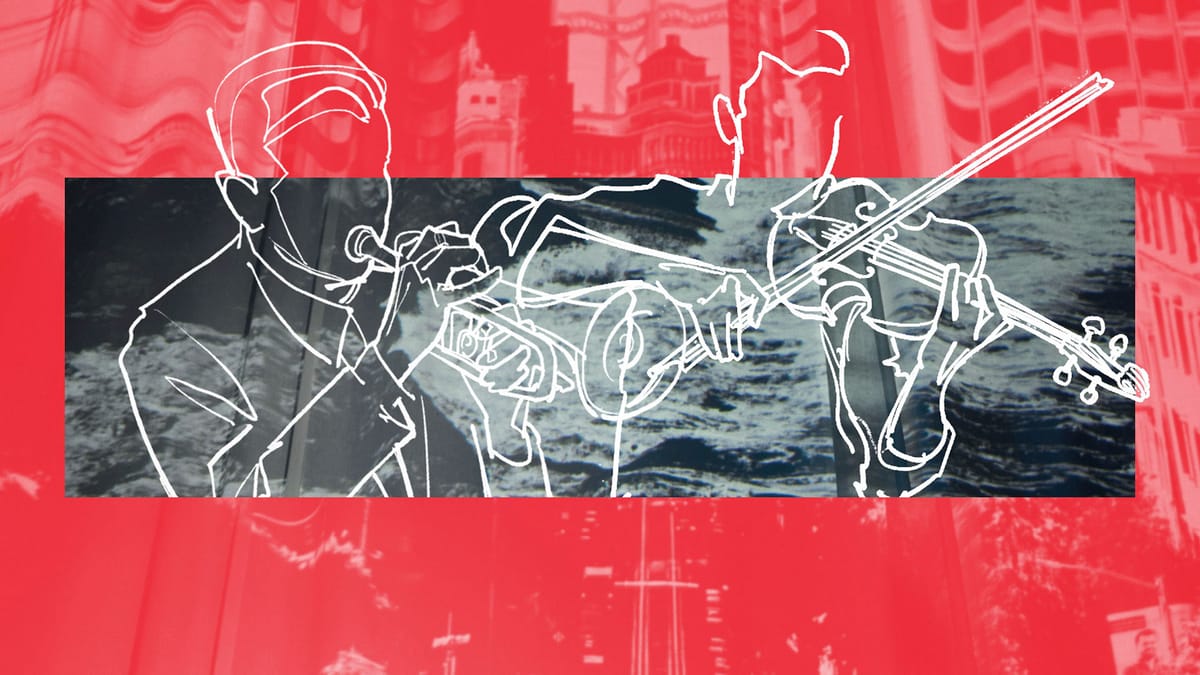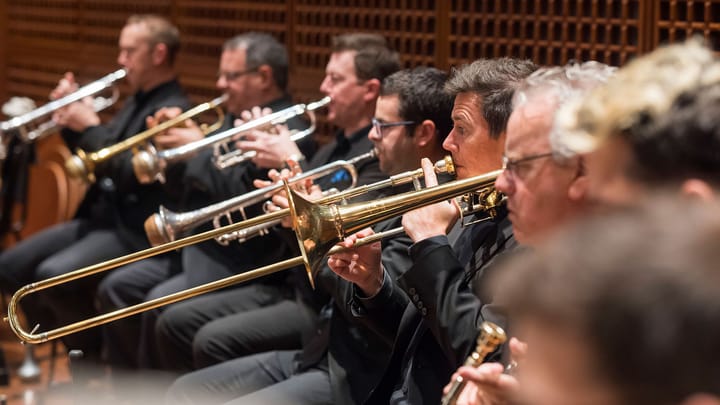In This Program
The Concert
Sunday, October 19, 2025, at 2:00pm
Musicians of the San Francisco Symphony
Andy Akiho
21 (2011)
Rainer Eudeikis cello, kick drum, and electronics
Jacob Nissly marimba and tambourine
Bohuslav Martinů
Quartet for Clarinet, Cello, Horn, and Snare Drum (1924)
Allegro moderato
Poco andante
Allegro ma non troppo
Matthew Griffith clarinet
Sébastien Gingras cello
Jessica Valeri horn
Stan Muncy snare drum
Richard Strauss
(Arr. Franz Hasenhöhrl)
Till Eulenspiegel einmal anders! (1895/1945)
Kingston Ho violin
Matthew Griffith clarinet
Jesse Clevenger horn
Steven Dibner bassoon
Daniel G. Smith bass
Intermission
Leoš Janáček
String Quartet No. 2, Intimate Letters (1928)
Andante
Adagio
Moderato
Allegro
Jason Issokson violin
Dan Carlson violin
Leonid Plashinov-Johnson viola
Sarah Chong cello
Program Notes
21
Andy Akiho
Born: 1979, in Columbia, South Carolina
Work Composed: 2008/11
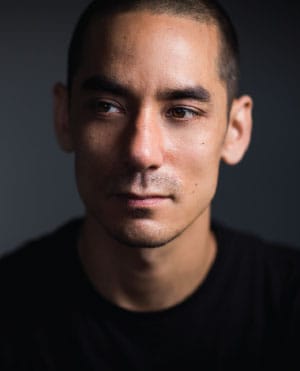
Andy Akiho’s 21 is a duet—which naturally leads one to assume this is a piece for two instruments. But that’s wrong. To be sure, it’s for two players, but each is given multiple responsibilities. The cellist is called on to play a kick drum and operate a loop pedal while also playing the cello. The percussionist is mostly occupied with the marimba, but is assigned a tambourine part to be played with a foot pedal.
Not your everyday duo, in other words. But then Akiho is not your everyday composer. A specialist on steel pans, his typical bailiwick is percussion ensemble, so often relegated to building annexes or basements given its ability to crank up the decibels to hard-rock levels. But that’s not all that’s going on behind those heavy soundproofed doors. Just because percussionists create sound by hitting stuff, it doesn’t necessarily follow that they have to hit it hard. They can conjure up delicately transparent fantasias just as readily as they can peel the paint off the walls.
Time spent listening to Akiho’s output reveals a kaleidoscopic sonic imagination at work, from gossamer embroideries to thundering showpieces. With the Grammy-nominated group Sandbox Percussion, he has created album-length works that never fail to fascinate, such as his 2021 Seven Pillars. But he’s just as intriguing outside the percussion studio; consider his recent BeLonging with Imani Winds, or LigNEousS Suite for string quartet and marimba.
His 21 is a 2011 adaptation of a 2008 piece written for cellist Mariel Roberts. “My goal with this piece was to incorporate techniques and phrases that would offer a unique contemporary sound world rooted in traditional Trinidadian Soca rhythms,” Akiho explained. About that title: it refers to the implied harmony in measure 21 of the Fugue movement from Johann Sebastian Bach’s G-minor Sonata for solo violin.
Quartet for Clarinet, Cello, Horn, and Snare Drum
Bohuslav Martinů
Born: December 8, 1890, in Polička, Bohemia
Died: August 28, 1959, in Liestal, Switzerland
Work Composed: 1924
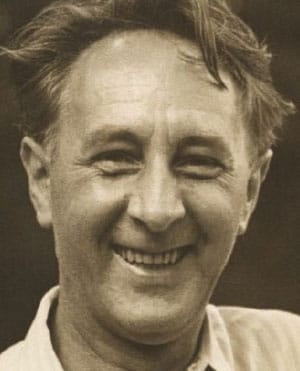
It’s downright refreshing to learn that a composer of such significance as Bohuslav Martinů was a lousy student at the Prague Conservatory. He was actually expelled for “incorrigible indolence.” But before anybody jumps at this as a vindication of the slacker mindset, be advised that Martinů went on to become one of the most prolific composers of the 20th century, right up there with such torrential types as Heitor Villa-Lobos and Darius Milhaud. Martinů possessed a capacity for razor-sharp focus that allowed him to zero in on the task at hand while mentally rejecting distractions; decidedly introverted in public, he was an open, warm-hearted chap in private. The idea has been floated that he might have had an autism spectrum disorder, but that’s by no means certain.
Familiarity with Martinů’s music soon reveals his fascination with unusual instrumental sounds and combinations. Consider his pervasive use of the piano in his orchestral scores, or the chamber work he wrote in 1940 spotlighting the theremin, a pioneering electronic instrument noted for its undulating, otherworldly sounds. So we shouldn’t be too surprised to find in his catalog a quartet for the unique combination of clarinet, cello, horn, and snare drum.
The quartet dates from 1924 when Martinů was soaking up the neoclassicism of Stravinsky and Les Six while studying in Paris with Albert Roussel. The piece is strongly influenced by Igor Stravinsky’s recent L’Histoire du soldat, with its prominent horn part and forays into kiddie-toy military marches. However, it’s more lightly scored and good-natured than Stravinsky’s delectably barbed satire.
The opening Allegro moderato makes extensive use of the snare drum in what seems to be a gentle satire of battle music. At the quartet’s heart is the intensely lyrical Poco andante second movement, an excellent counter to those scurrilous charges one hears occasionally about Martinů being an emotionally glib composer. The finale dances along happily, its constantly-shifting time signatures reflecting similar rhythmic practices by Stravinsky, Copland, Hindemith, and Bartók.
Till Eulenspiegel einmal anders!
Richard Strauss
(Arr. Franz Hasenhöhrl)
Born: June 11, 1864, in Munich
Died: September 8, 1949, in Garmisch-Partenkirchen, West Germany
Work Composed: 1894–95 (Arr. 1945)
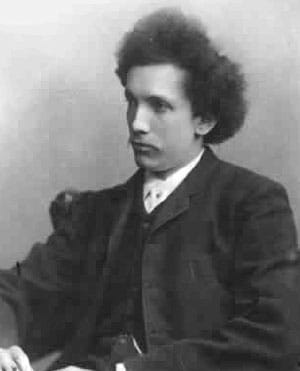
We all love tricksters, whether they’re court jesters, practical jokers, Peck’s Bad Boy, or the crew behind Candid Camera. There’s something elementally appealing about a bad boy who cocks a snook at pompous respectability, and something just as satisfying about watching a bad boy getting his well-earned comeuppance.
That accounts for the long popularity of the medieval German trickster Till Eulenspiegel, a chap who filled such a well-defined role that if he didn’t actually exist, it would have been necessary to invent him. He’s the guy who, admonished by his father to ride obediently behind him on horseback and not cause any trouble, drops his pants and moons everybody as he passes by. He loved nothing better than to cause a fracas in the marketplace or to send a bunch of stuffy professors into a tizzy. Usually harmless, he caused chaos but not injury, although some of his pranks were in appallingly bad taste while others teetered on the edge of legality.
Till Eulenspiegel was on hand to cheer up Richard Strauss just when he needed him most. His 1893 opera Guntram had been a sickening failure and Strauss was mad at the world. Originally he thought to write a revenge opera starring himself as a rebel with a cause who takes on the stolid art-phobic citizens of an imaginary German town. He clothed it in historical respectability by portraying himself as Till Eulenspiegel. As planned, it was likely to have been edgy, bitter, and unpleasant. Fortunately he dropped that project in favor of an orchestral tone poem about Till’s escapades. He hadn’t written a tone poem since the metaphysical Death and Transfiguration in 1889. Now it was time for something completely different.
He wrote it “to give the people in the concert hall a good laugh for once.” He aimed right at the heart of the story and made it big, bright, and brilliant. Not surprisingly, it was a smash hit with audiences and to this day remains the most popular of his 10 symphonic poems. Given a lavish, ear-tickling orchestration, Till Eulenspiegel’s Merry Pranks presents an episodic catalog of some of Till’s best escapades, such as his wreaking chaos in the town marketplace, his incompetence in all matters romantic, and his mockery of a gaggle of stuffy scholars. Strauss employs a crisp five-note “Till” theme that burbles insouciantly throughout the work, combined with a “once upon a time” theme that you hear in slow motion at the very beginning. Both themes pop up in various guises throughout the pageant to come, whether it’s about dancing, wild antics, lovemaking, or perhaps most memorably, Till’s trial and execution by hanging. (Strauss even portrays his last few twitches.)
Given Till Eulenspiegel’s narrative breadth and lavish orchestration, one wouldn’t think that it would take kindly to being abridged by half and stripped down to an ensemble of five—violin, clarinet, horn, bassoon, and double bass. But Till Eulen-spiegel einmal anders! (Till Eulenspiegel Another Way!) gets the job done handsomely. It’s the product of a Viennese professor named Franz Hasenhöhrl, completely unknown beyond this one nervy frolic—unless, of course, you’ve read his thesis on the piano music of Carl Czerny.
String Quartet No. 2, Intimate Letters
Leoš Janáček
Born: July 3, 1854, in Hukvaldy, Moravia
Died: August 12, 1928, in Moravská Ostrava, Moravia
Work Composed: 1928
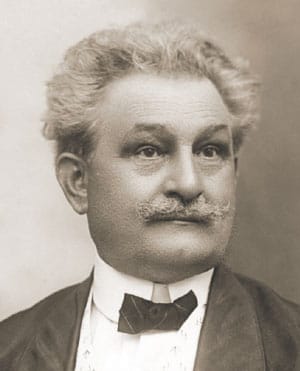
Some among us have experienced the exhilarating yet potentially devastating experience of loving lavishly but not altogether wisely. That was certainly the case for Leoš Janáček, who in 1917 became deeply attached to a young woman named Kamila Stösslová, despite being her senior by nearly 40 years. They were both married—Kamila happily, Leoš considerably less so. Nor was Kamila a particularly cultured or artistically inclined person; she was a quiet-living housewife and mother of two. Nevertheless she became Janáček’s unwitting and sometimes reluctant muse for the remaining 11 years of his life. Although we’ll never know precisely the full nature of her feelings, it’s clear that Leoš was radiating the lion’s share of the heat. While their relationship was almost certainly platonic, Kamila seems to have been the inspiration behind several female characters in Janáček’s later operas.
Without a shadow of a doubt, Kamila was the catalyst for String Quartet No. 2, Intimate Letters, one of Janáček’s last completed compositions. We can be sure of that because he told us so—just as he told Kamila. “Now I’ve begun to write something nice. Our life will be in it. It will be called Love Letters. There have already been so many of those dear adventures of ours, haven’t there? They’ll be little fires in my soul and they’ll set it ablaze with the most beautiful melodies.” Thus a string quartet was conceived as a memoir of a passionate and sometimes difficult friendship.
A word is in order about a potentially confusing yet essential characteristic of Janáček’s unique musical idiom. He was deeply engaged with the idea of manifesting speech in music. His fascination was not with vocal contours per se, as in the ubiquitous recitative of Baroque opera, but with the subliminal thoughts and emotions that were expressed by the melodic shapes and rhythms of speech, particularly in the Czech language. So broad-ranging were his experiments in “speech melodies” that he extended the technique to his text-free instrumental works. Certain of Janáček’s apparent stylistic eccentricities—the frequent changes of meter, the abrupt shifts between crispness and languor, the brief repetitive rat-a-tat rhythms—start making more sense if we hear them as being as much speech as music.
Thus the first figure we hear in String Quartet No. 2 can be nobody but Janáček himself—the three-note drumbeat of his name is unmistakable—while the next statement is clearly Kamila, portrayed throughout by the viola, its otherworldly aura achieved via bowing sul ponticello, on or near the bridge. The first movement takes those two themes through the psycho-musical journey of their first meeting, calm and fierce, loving and angry, ultimately exultant.
The second movement is all about Kamila, represented by a wistful melody in the viola that represents “yearning as there at your place, in that heaven of ours,” according to Janáček. He’s not altogether absent, as his theme is briefly revisited, just enough to remind us of their first meeting. The dancelike third movement is, according to Janáček, “a vision of Kamila” in a lilting barcarolle rhythm. But all is not contentment and joy, as turbulent passages (some even in quintuple meter) make for downright gritty interludes.
The finale opens almost as a nationalistic folk-dance movement à la Dvořák, but the older Czech master never conceived of anything as volatile and personal as this complex essay on Kamila’s role in Janáček’s life. Despite occasional invocations of happier times, angst ultimately wins out, ending the quartet in searing trills and coarse interjections.
—Scott Foglesong
About the Artists
Rainer Eudeikis joined the San Francisco Symphony as Principal Cello in the 2022–23 season and holds the Philip S. Boone Chair. He was previously principal cello of the Atlanta Symphony and Utah Symphony, as well as for the Mainly Mozart Festival and Cabrillo Festival of Contemporary Music. Recent solo performances include Esa-Pekka Salonen’s Cello Concerto with the SF Symphony (recorded for SFS Media), Shostakovich and Haydn concertos with the Atlanta Symphony, and Schumann’s Cello Concerto and Strauss’s Don Quixote with the Utah Symphony.
Jacob Nissly joined the San Francisco Symphony as Principal Percussion in 2013 and is also chair of the percussion department at the San Francisco Conservatory of Music. Previously, he was principal percussion of the Cleveland Orchestra and the Detroit Symphony. In 2019, Nissly premiered Adam Schoenberg’s percussion concerto Losing Earth with the SF Symphony, and has also performed it with the New Zealand Symphony and Omaha Symphony. He holds a bachelor of music from Northwestern University and a master’s degree from the Juilliard School.
Matthew Griffith joined the San Francisco Symphony as Associate Principal and E-flat Clarinet at the beginning of the 2022–23 season. He previously served as acting assistant principal clarinet with the North Carolina Symphony and the Nashville Symphony and was a member of TŌN (The Orchestra Now), a graduate-level training orchestra based at Bard College. He has performed as guest soloist with the Boston Pops, Milwaukee Symphony, Ocean City Pops, Eastern Connecticut Symphony, United States Army Field Band, and “The President’s Own” United States Marine Band.
Sébastien Gingras joined the San Francisco Symphony in 2010 and holds the Penelope Clark Second Century Chair. He was previously a member of the New World Symphony and the St. Louis Symphony. He grew up in Chicoutimi, Québec, where he was educated at the Conservatoire de Musique. After graduating, he moved to Boston to study at New England Conservatory, where he received his master’s degree in 2005. He has participated in the Ravinia Festival’s Steans Institute and Yellow Barn.
Jessica Valeri joined the San Francisco Symphony horn section in 2008. Prior to her appointment, she was a member of the St. Louis Symphony, Colorado Symphony, Grant Park Orchestra, and Milwaukee Ballet Orchestra. She has also performed with the Milwaukee Symphony, Richmond Symphony, Lyric Opera of Chicago, and the International Contemporary Ensemble, and participated in the Grand Teton Music Festival, Lakes Area Music Festival, and Mainly Mozart.
Stan Muncy joined the San Francisco Symphony percussion section in fall 2024 after serving as a frequent extra musician since 2010. He was previously a member of the Honolulu Symphony and Santa Rosa Symphony, and has toured with Eighth Blackbird. An alumnus of the San Francisco Symphony Youth Orchestra, he studied at California State University, East Bay; San Francisco Conservatory of Music; and the Colburn School.
Kingston Ho joined the San Francisco Symphony’s second violin section in September of this year. He recently completed a master’s degree at the Colburn School of Music, where he studied with Robert Lipsett. Previously, he earned a bachelor’s degree from Vanderbilt University, where he studied with Cornelia Heard. A native of New Jersey, Ho began playing violin at the age of five. He has served as concertmaster of the Verbier Festival Orchestra and was a fellowship recipient at the Aspen Music Festival. He was also previously a member of the New York String Orchestra Seminar and National Youth Orchestra of the USA. As a part of the Eunoia Quartet, he won first prize at the MTNA National Chamber Music Competition.
Jesse Clevenger has served as Acting Assistant Principal Horn with the San Francisco Symphony and has been assistant principal with the Houston Symphony and Sun Valley Music Festival. He has also appeared with the Chicago Symphony, Dallas Symphony, Hong Kong Philharmonic, and Toledo Symphony.
Steven Dibner served as Associate Principal Bassoon of the San Francisco Symphony from 1983 until his retirement in 2024. He previously played with the New Jersey Symphony, Orpheus Chamber Orchestra, and Metropolitan Opera Orchestra, and has performed at the Aspen and Marlboro festivals. He studied at Indiana University and the Juilliard School.
Daniel G. Smith was appointed Associate Principal Bass of the San Francisco Symphony in 2017. He previously served as principal bass of the Santa Barbara Symphony, and he was a member of the San Diego Symphony. He has served as guest principal and associate principal bass with the Los Angeles Chamber Orchestra, and guest principal of the Lakes Area Music Festival in Brainerd, Minnesota. He received his Bachelor of Music from Rice University’s Shepherd School of Music.
Jason Issokson joined the San Francisco Symphony as Associate Concertmaster in September of this year. He was previously a member of the Los Angeles Chamber Orchestra and a member of the Argus and Rolston string quartets. An award-winning chamber musician, he studied with Midori at the Manhattan School of Music and University of Southern California. He plays an Antonio Stradivari violin, labeled 1698, on loan from the SF Symphony.
Dan Carlson joined the San Francisco Symphony in 2006. He currently serves as Principal Second Violin, occupying the Dinner & Swig Families Chair. He previously served as rotating concertmaster for the New World Symphony and he has made solo appearances with the Phoenix Symphony, Chicago String Ensemble, New World Symphony, and the Prometheus Chamber Orchestra. A graduate of the Juilliard School, he has performed chamber music extensively throughout New York.
Leonid Plashinov-Johnson joined the San Francisco Symphony viola section in 2022. Previously a member of the St. Louis Symphony, he is a laureate of multiple competitions, most recently the Primrose International Viola Competition, and has participated in the Yellow Barn, Ravinia, and AIMS festivals. Born in Russia, he graduated from New England Conservatory, where he won the concerto competition.
Sarah Chong joined the San Francisco Symphony cello section in September of this year and holds the Elizabeth C. Peters Cello Chair. A Bay Area native, she began her musical studies with Jihee Kim, and received her bachelor’s degree from Northwestern University. As an avid chamber musician, she has performed at the St. Paul String Quartet Competition, Fischoff Chamber Music Competition, the Meadowmount School, and Music@Menlo, and spent years under the guidance of the Dover Quartet.

